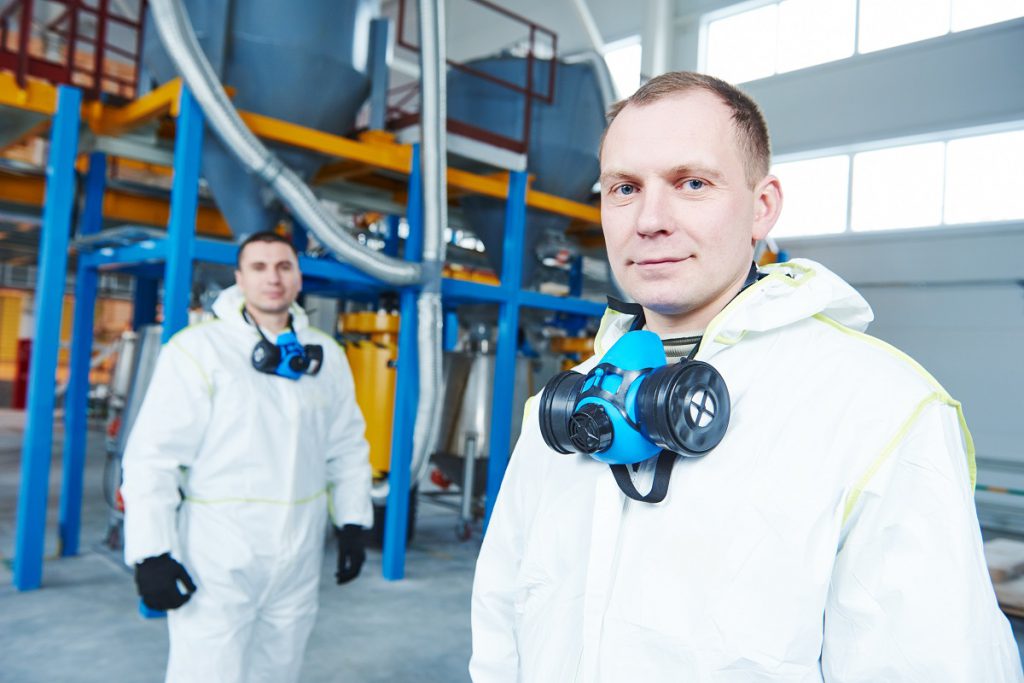Hydrogen Chloride (or HCL gas), is a toxic gas which is important in the semiconductor industry. HCL has many other uses; for instance, it’s used to produce certain chemicals, metals, petroleum, textiles, and even some food products such as gelatin, soy sauce, and vegetable protein. At room temperature, it’s a colorless gas with a rather pungent smell. When dissolved in water, it is one of the strongest known and toxic acids. And, when it reacts to common metals it yields hydrogen, which can be explosive when it comes in contact with air.
HCL is just one of several harsh gases and acids that are processed daily in many manufacturing facilities around the world. Others include ammonia, chlorine, hydrogen bromide, sulfur dioxide, nitrogen trifluoride, phosphorous, and silicon tetrachloride. The one thing these harsh chemicals all have in common is that they require strong safety processes and procedures in order to handle and process. Here are the tools you need for mixing, storing, transferring, and preparing these types of hazardous chemicals.
Personal Safety
First thing’s first is your personal protection. The safe preparation of HCL gas requires you to wear the right personal protective equipment (PPE). Engineers and process facility managers should have their own PPE choices in mind, but here’s a quick list of the protection required according to OSHA standards: a full suit to protect your body, an acid-resistant apron, rubber gloves, boots, respirator, and a face shield or protective eyewear for your eyes and face. These items should always be worn while preparing any corrosive chemicals.
Work Space Safety
Work spaces need proper safety too. Make sure there’s good ventilation and air flow all around the work area, and be sure to include a fume hood. Using protective systems, such as gas measuring instruments that can detect fume levels in work environments, is also an important part of safely preparing and working with HCL gas and other harsh chemicals. Even chemicals in fluid states give off vapor, so always keep eye goggles on at all times, and install an eyewash station and quick drench shower nearby in case of any chemical burns.
Always keep HCL gas and other chemicals in cool, well-ventilated areas. Cover them if stored outdoors. Keep them off the ground, and away from radiant heat sources and sources of moisture. When in containment, the temperatures of these solutions should never exceed 125 degrees Fahrenheit (52 degrees Celsius).
When handling corrosive gases or fluids such as HCL, you’ll want to rely on “double containment” methods. These are redundant systems of containment to ensure maximum safety so that spills or leaks are always contained. Although it’s not always a compliance regulation, using a pneumatic valve and a manual valve together is a good engineering practice and can help improve safety measures. Another OSHA requirement (and smart engineering practice) is ensuring that there’s a shut-off valve for safe and easy maintenance, which can prevent continued operation.
Fluid Handling Device Safety
The corrosive and harmful nature of HCL requires the proper use of fluid handling devices such as Teflon® valves. A variety of the valves available from iPolymer, including manual, pneumatic, solenoid, and ball valves, can be used with HCL and other corrosive liquids and gases. These valves are made with high purity materials such as PTFE (or Teflon®), which is highly resistant to harsh corrosives and acidic solutions thanks to its lubricative properties that make it ideal for low friction applications, ensuring less natural wear and energy use for equipment and machinery.
While HCL and its corrosive brothers may be risky to work around, but with the proper tools, practices, and corrosion resistant devices, such as; Teflon® valves, most worries should evaporate.

